In today’s post, I’ll share the results from the fourth of our “Links as a Ranking Factor” studies. We conducted the first of these studies in May 2016 and have been tracking the same query set over time to measure any material shifts in the role of links. In this year’s study, we also looked at different market sectors to see how the role of links may vary by market sector.
We have also increased the number of queries we’re examining over time. We did that to make sure that we had enough data for the market sector analyses to be meaningful. The breakout of the month for each of our studies, and the number of queries examined per study, is as follows:
- May 2016 – 6K queries
- August 2016 – 16K queries
- May 2017 – 16K queries
- August 2018 – 27K queries
Each of the query data sets includes the original query sets from the earlier studies, so I’ll show an apples-to-apples comparison of those results, as well as the larger-scale results from this year’s study. As a bonus, I’ll also comment on the increase in scope and quality of Moz’ Link Explorer
The Results
As with our prior studies, we received the gracious support of Moz by allowing us to access Link Explorer to pull the data for our study. Link Explorer went into Beta in March 2018 and represents an ambitious effort by Moz to expand the size of their index. In short, it looks like they succeeded:
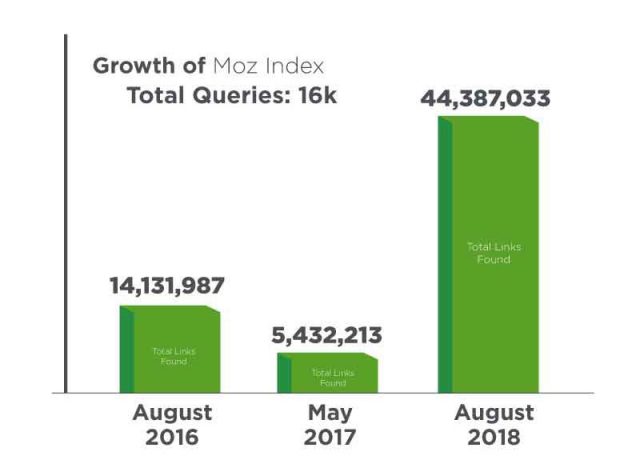
For the link study itself, the first set of charts that we will look at are based on the total number of links pointing to the ranking page. For these, we calculated the Quadratic Mean Correlation score. Jump down to the methodology section to see what a “Quadratic Mean Spearman Correlation Score” value actually means. Here is a look at that data for 6K queries across all four instances of the study that we’ve run to date:
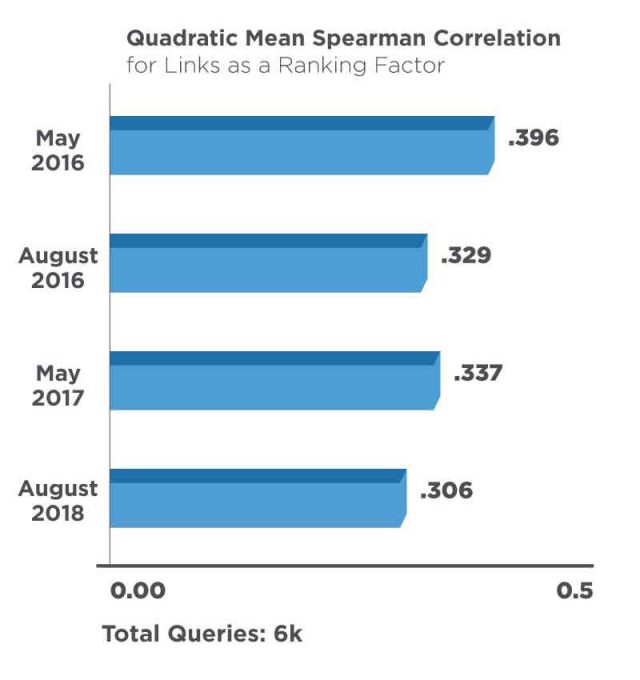
Note that the same 6,000 queries for this chart were used in all four data sets. While this looks like it shows some level of decline, the reality is that this movement is within normal statistical variance. For all intents and purposes, this already shows a strong correlation between total links to its page and its ranking.
Beginning with the second study, we upped the query count to 16,000 queries. We carried that same set of 16K queries through to this year’s edition of the study. Here are the correlation scores for those three datasets of 16K queries:
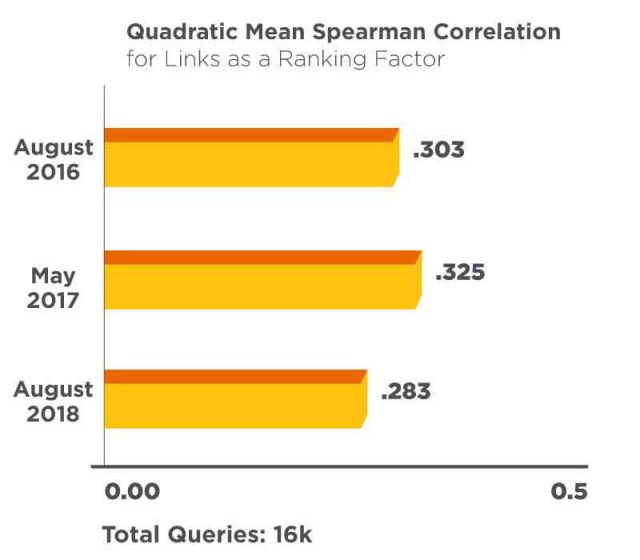
Once again, all three sets show strong results, and the variance is within normal ranges of statistical variance.
In this latest version of the study, we updated the query count to 27K queries. This comes in at a solid value as well:
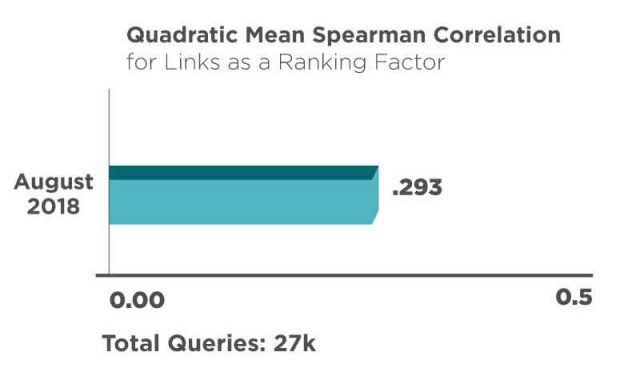 One of the more notable findings is that for the first time in all the studies that we’ve done, we see that the Moz DA and the Moz PA are better predictors of ranging than the total link count! The data for this is as follows:
One of the more notable findings is that for the first time in all the studies that we’ve done, we see that the Moz DA and the Moz PA are better predictors of ranging than the total link count! The data for this is as follows:
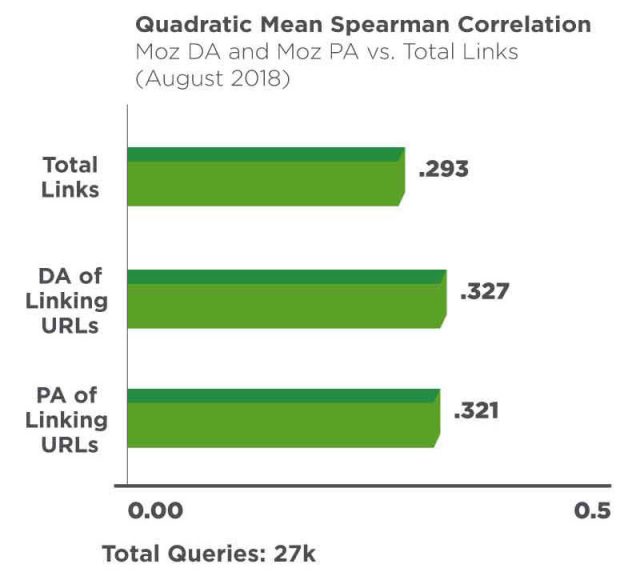
As with prior studies, we compared the total link correlation for commercial and informational queries:
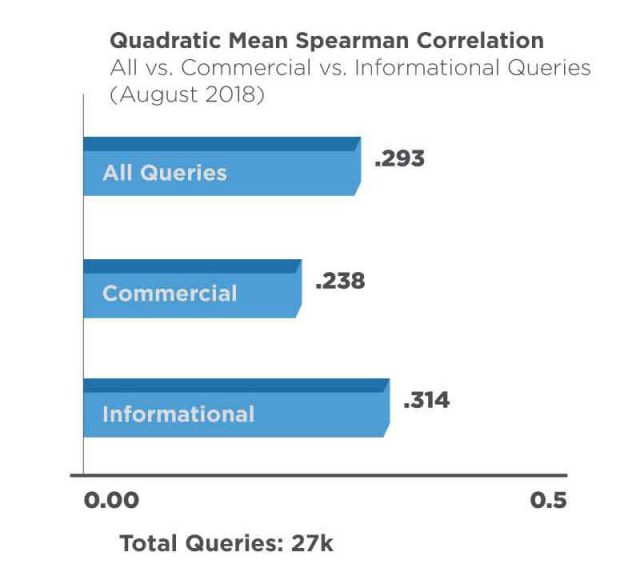
Next up, in this year’s study, we evaluated how links might vary as a ranking factor across market segments. In this first view, let’s look at that for commercial queries, divided into Medical, Financial, Technology, and Other segments:
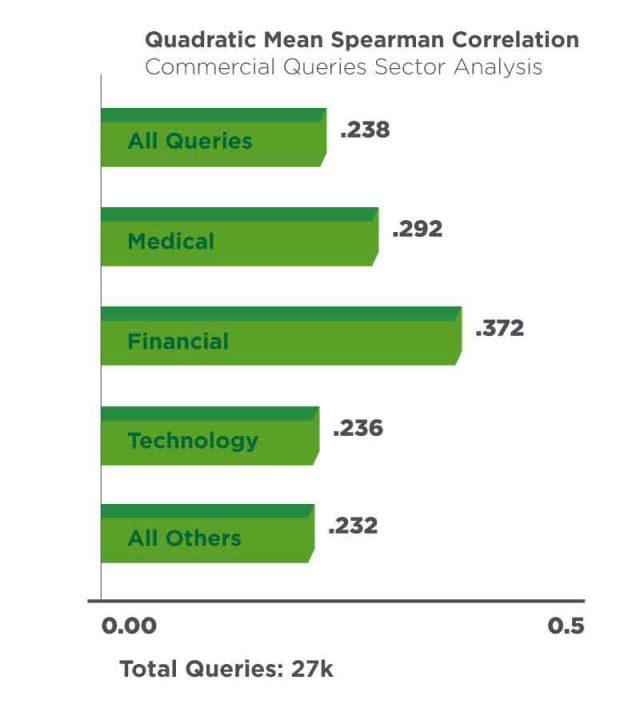
This data shows that links are a much bigger ranking factor for financial queries then for other types of queries. Before we draw a final conclusion for that though, let’s also look at a sector analysis for informational queries:
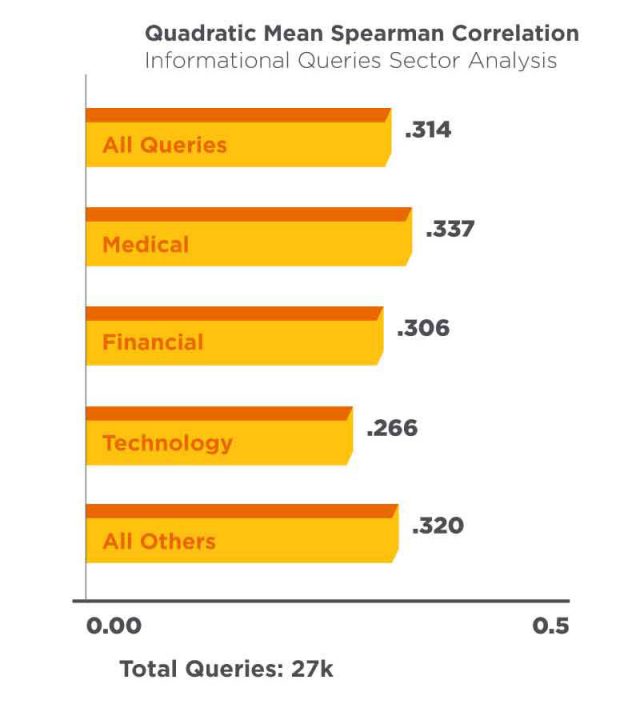
Starting with the first study, we also aggregated the normalized link counts (see the methodology section below for an explanation of what that is) by ranking position.
The reason this view is important is that relevancy and quality are very large ranking factors, as they should be. In addition, there are many other factors such as Google’s need to show diversity in the SERPs (see the section titled “Why Aren’t the Non-Aggregated Correlation Values Higher?” for more detail on this). In the aggregated link analysis, we get a summarized view of the impact of links spread across a large array of search results. Here is what we saw looking at the 6K query set across all four studies:
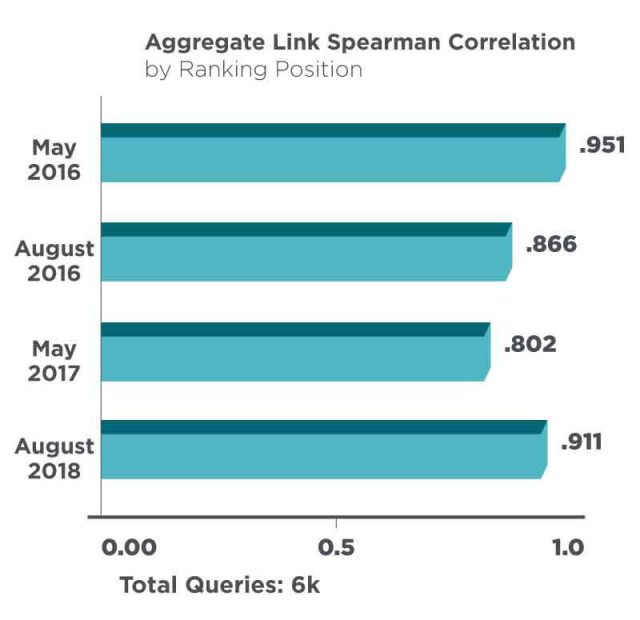
Here is the data for the 16K query set across the last three studies:
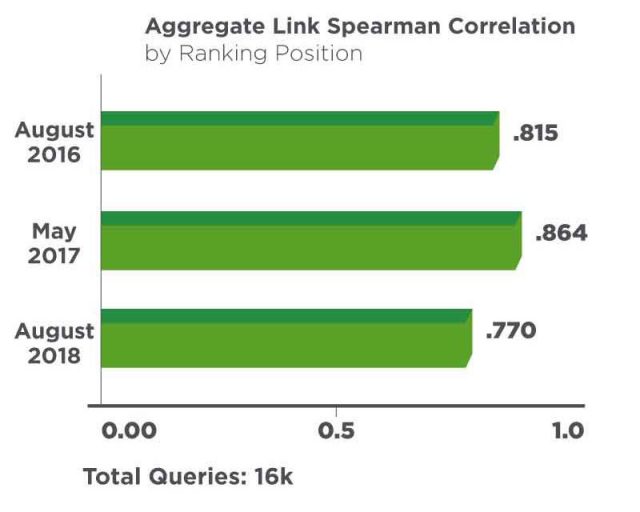 Here is the data for the 27K query set for this latest study:
Here is the data for the 27K query set for this latest study:
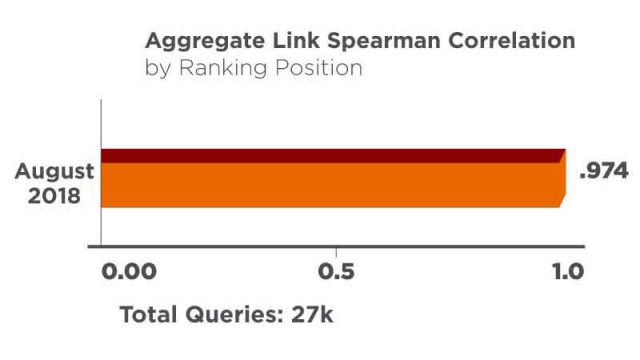
In summary, our aggregated view shows a very powerful correlation between links and ranking position.

